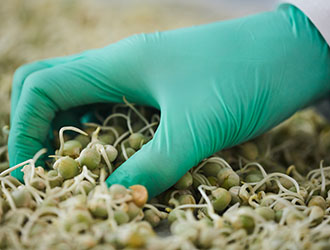Knowledge
KINGFA Solutions
Hand Protection
Respiratory Protection
Environmental Solutions
Industrial Protection
Filtering Material
Protective Apparels
Laboratory Solutions
Email:
kingfamed@kingfa.com
Address:
No.33 Kefeng Road, Science City, Guangzhou, Guangdong Province, China, 510663
INQUIRY
Hand Protection
Purple Nitrile Exam Gloves by KINGFA MEDICAL: Advanced Protection for Precision Demands
KINGFA MEDICAL Purple Nitrile Exam Gloves deliver premium protection, comfort, and visibility—trusted by professionals worldwide.
READ MORE

What’s the difference between gloves made of nitrile, natural rubber, and PE ......?
This article aims to provide a guide for choosing suitable materials for various industries by comparing the properties, advantages, and application areas of gloves made of three different materials: nitrile rubber, natural rubber, and polyethylene (PE).
READ MORE

Introduction to Cleanroom Gloves: Characteristics, Processes, and Application Scenarios
KINGFA cleanroom gloves ensure that contaminants are transferred to the processed or manufactured products or components in a clean environment to the minimal extent.
READ MORE

Regulatory Access Systems for Nitrile Gloves in Major Global Markets — FDA and CE Market Access & Compliance Practices
This article analyzes FDA (510(k)) and CE (MDR/PPE) regulatory requirements for nitrile gloves in the U.S. and EU markets, covering classification, testing standards (ASTM/EN), and compliance strategies. It provides guidance for manufacturers navigating global certifications.
READ MORE

KINGFA Biodegradable Nitrile Gloves: Eco-friendly and Superior Performance
Discover KINGFA biodegradable nitrile gloves—eco-friendly, high-performance gloves that degrade in microbial environments. Ideal for labs, medical use, and food processing. Latex-free, chemical-resistant, and available in multiple sizes.
READ MORE

Discover the Benefits of KINGFA's Biodegradable Nitrile Gloves
Looking for gloves that are both durable and eco-friendly? Our biodegradable nitrile gloves are the perfect solution! By using specially designed degradable additives, these gloves can easily break down without causing any harm to the environment. These additives also ensure that the gloves are safe for use and gentle on the planet
READ MORE

SUCCESS
You've successfully subscribed to our newsletter.
OK
